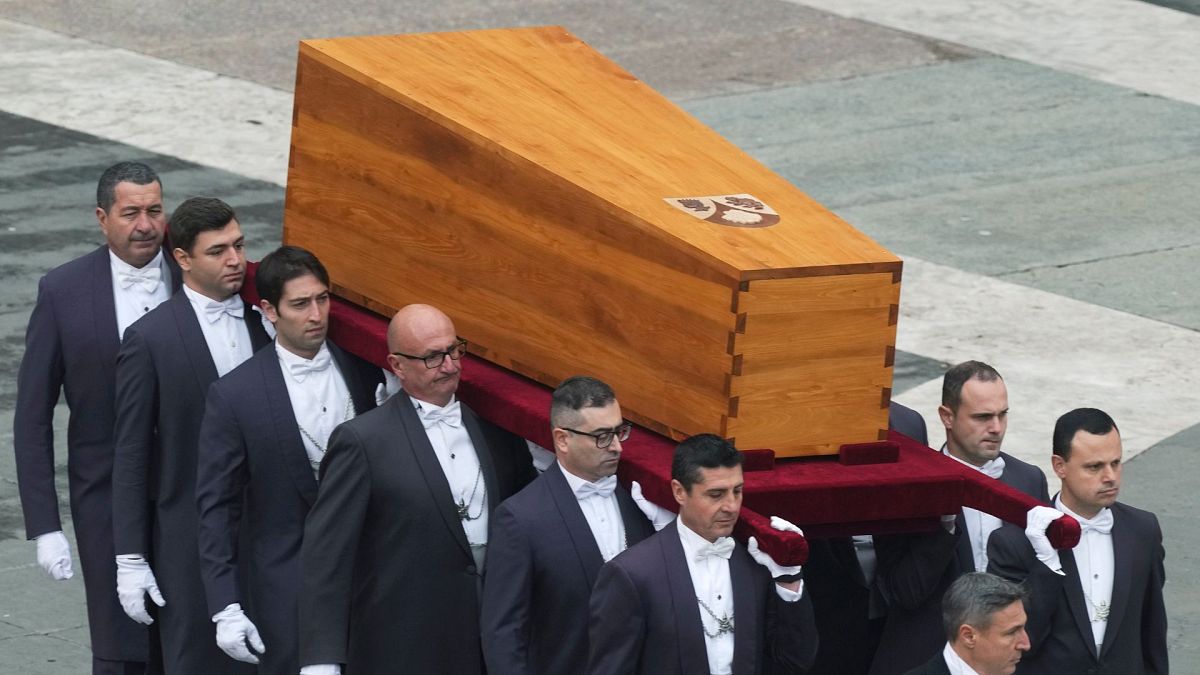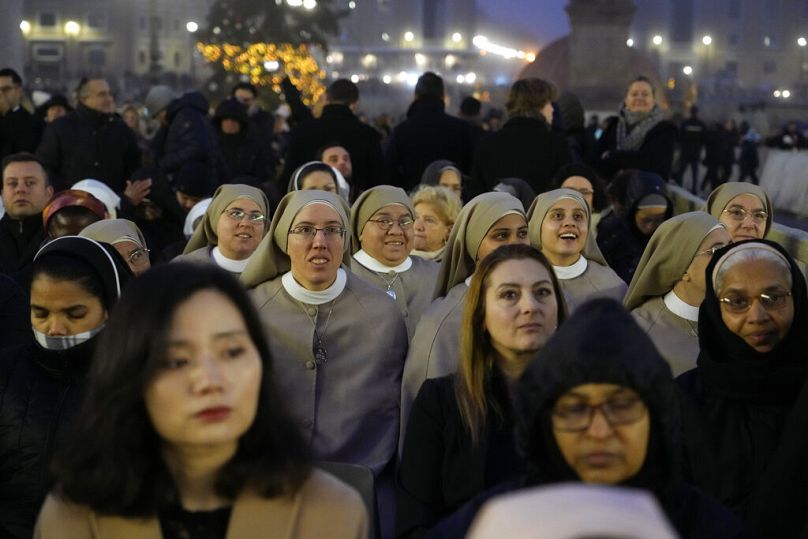Police estimated that 100,000 people would attend Thursday's ceremonies, higher than an original estimate of 60,000.
Thousands of mourners poured into St. Peter’s Square on Thursday for the funeral of Pope Emeritus Benedict XVI.
They were paying their final respects to the German theologian who made history by retiring and participate in a rare requiem Mass for a dead pope presided over by a living one.
Thick fog enshrouded the Vatican before dawn as civil protection crews and police manned metal detectors and barricades to herd well-wishers into the square. Police had estimated some 100,000 would attend, higher than an original estimate of 60,000, Italian media reported.
Pope Francis presided over the funeral, an event which drew heads of state and royalty despite Benedict’s requests for simplicity and Vatican efforts to keep the first funeral for an emeritus pope in modern times low-key. Only Italy and Germany were invited to send official delegations, and German President Frank-Walter Steinmeier and Italian President Sergio Mattarella attended.
Other heads of state and government decided to take the Vatican up on its offer and come in their “private capacity.”
Benedict’s coffin was carried out from the basilica and placed before the altar as the faithful recited the rosary. The ritual itself was modeled on the code used for dead popes but with some modifications given Benedict was not a reigning pope when he died.
After the Mass, Benedict’s cypress coffin was to be placed inside a zinc one, then an outer oak casket before being entombed in the crypt in the grottos underneath the basilica that once held the tomb of St. John Paul II before it was moved upstairs into the main basilica.
Some 200,000 paid tribute to Benedict during three days of public viewing in St. Peter’s Basilica, with one of the last ones Friar Rosario Vitale, who spent an hour praying by his body. He said Benedict had given him a special dispensation to begin the process of becoming a priest, which was required because of a physical disability.
“So today I came here to pray on his tomb, on his body and to say ‘thank you’ for my future priesthood, for my ministry,” he said. “I owe him a lot and this for me was really a gift to be able to pray for an hour on his bier.”
The former Joseph Ratzinger, who died 31 December at age 95, is considered one of the 20th century’s greatest theologians and spent his lifetime upholding church doctrine. But he will go down in history for a singular, revolutionary act that changed the future of the papacy: He retired, the first pope in six centuries to do so.
Francis has praised Benedict’s courage in stepping aside when he believed he no longer had the strength to lead the church, saying it “opened the door” to other popes doing the same. Francis, for his part, recently said he has already left written instructions outlining the conditions in which he too would resign if he were to become incapacitated.
Benedict never intended his retirement to last as long as it did -- at nearly 10 years it was longer than his eight-year pontificate. And the unprecedented situation of a retired pope living alongside a reigning one prompted calls for protocols to guide future popes emeritus to prevent any confusion about who is really in charge.
During St. John Paul II’s quarter-century as pope, the former Joseph Ratzinger spearheaded a crackdown on dissent as prefect of the Congregation for the Doctrine of the Faith, taking action against the left-leaning liberation theology that spread in Latin America in the 1970s and against dissenting theologians and nuns who didn’t toe the Vatican’s hard line on matters like sexual morals.
His legacy was marred by the clergy sexual abuse scandal, even though he recognized earlier than most the “filth” of priests who raped children, and actually laid the groundwork for the Holy See to punish them.
As cardinal and pope, he passed sweeping church legislation that resulted in 848 priests being defrocked from 2004-2014, roughly his pontificate with a year on either end. But abuse survivors still held him responsible for the crisis, for failing to sanction any bishop who moved abusers around and identifying him as embodying the clerical system that long protected the institution over victims.

